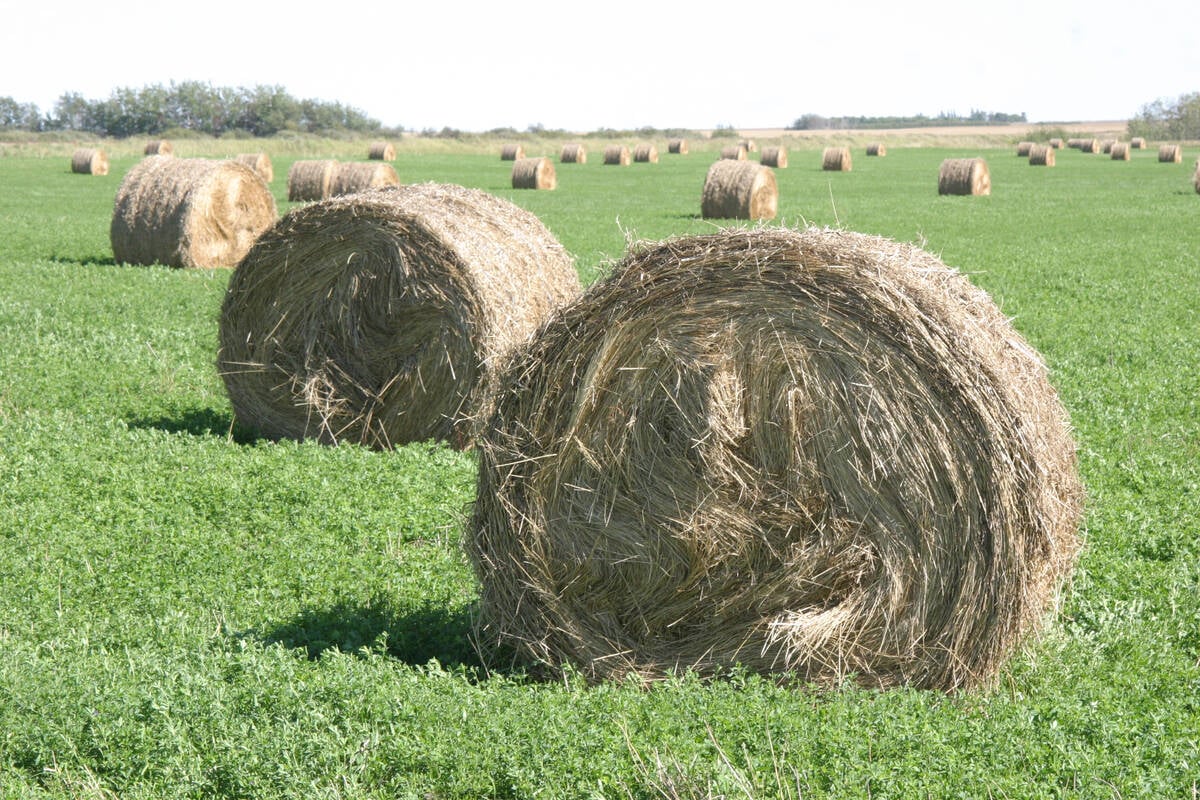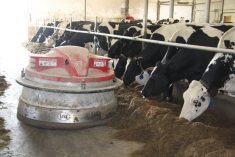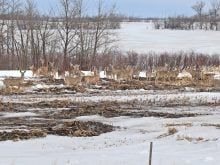There are only a few true veterinary emergencies in which the lives of cattle can be threatened quickly.
Some issues can wait while others can’t. This is where you need a trusting and working relationship with a veterinarian to know which “emergencies” need immediate action.
A lot of veterinarians may want the animal brought to the clinic, where they have equipment, supplies and staff to help deal with the problem.
The trailer should be extra clean and contain extra straw, particularly if there is the potential for surgery, because we want to keep the cattle as clean as possible.
Read Also

Breaking down successful winter feeding into six steps
It’s that time of year when it is important to start planning for a cow herd’s winter feeding program. Here are six steps I think are necessary to consider when getting your feed tested.
Calving related problems used to take up most of a veterinarian’s emergency time.
The cow or heifer should be checked if no progress is made within an hour to hour and a half.
Try to correct a regular malpresentation for 20 minutes, but bring in the vet if no progress is made because time is of the essence.
Check to see if the calf is alive because a dead fetus won’t hurt the cow as long as it is removed in a reasonable amount of time and isn’t smelly and rotten.
It is sometimes difficult to tell if the calf is alive. Many producers have thought the calf was alive, but it was only the cow contracting and moving the calf.
A prolapsed uterus is a real emergency and needs to be attended to as quickly as possible.
It is generally best not to transport a cow with this condition because movement and gravity may pull the uterus down farther and could rupture the uterine arteries and cause an internal bleed-out.
This is why these cases must be handled gently.
I used to tell producers to take their time and get the cow to an area where it could be handled. Maternity pens have saved the lives of many cows with a prolapsed uterus.
Cows that are down outside should have a lariat thrown over their heads in case they get up because then there is a way to catch them.
I wouldn’t totally restrain them until the veterinarian arrived, unless they were already caught, because the extra struggling could worsen the prognosis.
Laying a garbage bag underneath a cow that is down in straw may help keep it clean.
Prolapsed uterus is not a hereditary condition like a prolapsed vagina, so there are no greater odds of the cow prolapsing again next year then any other cow in the herd.
The prognosis for recovery is high and rebreeding is likely if veterinarians attend these cases fairly quickly, particularly with heifers, which have a smaller uterus.
Broken legs in calves are another emergency in which quick restraint and attendance can often lead to a positive outcome.
Calves will often try to step on the broken leg, which increases the odds of the fracture compounding (breaking through the skin). As well, the break swells up a lot if it is left too long.
Both of these problems worsen the prognosis.
Breaks lower down on the legs usually require casting, while higher breaks, such as on the tibia, can often be successfully treated using a Thomas Schroeder splint. The leg may not be perfectly straight, but the break will heal and the calf will go on to be a marketable calf.
Breaks in larger feedlot animals or breeding stock may require “emergency slaughter,” so don’t give antibiotics or pain medication until it’s known where the case is going.
Downer cows and bulls can struggle and hurt themselves if down for any period of time, which can cause nerve damage.
As a result, they should be looked at fairly quickly from an animal welfare perspective.
They may be injured and require emergency slaughter, which would need to be done on the farm because downer animals should not be transported for slaughter.
Cows that have recently calved may have a toxic mastitis or metritis, which requires extensive treatment, including intravenous fluids.
Calcium (the true milk fever), phosphorus and magnesium deficiencies or combinations of these deficiencies can cause downers, and treatment is often favorable if done quickly. This may also lead the veterinarian to check the rest of the herd to avoid further cases.
Downers need to be bedded well and given feed and water if they are going to be down for any period of time. Again, I suggest getting them checked before attempting treatment unless you clearly know what the problem is because treatments vary considerably.















